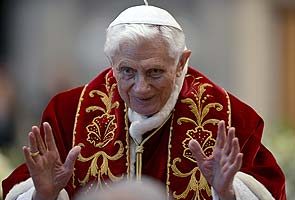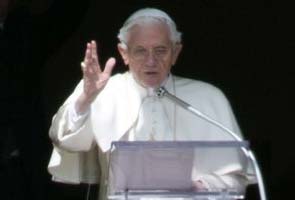Houston: In April, after being told that only a transplant could
save her from a fatal lung condition, Rebecca S. Tomczak began calling
some of the top-ranked hospitals in the country.
She started with
Emory University Hospital in Atlanta, just hours from her home near
Augusta, Ga. Then she tried Duke and the University of Arkansas and
Johns Hopkins. Each advised Tomczak, then 69, to look somewhere else.
The
reason: Tomczak, who was baptized at age 12 as a Jehovah's Witness,
insisted for religious reasons that her transplant be performed without a
blood transfusion. The Witnesses believe that Scripture prohibits the
transfusion of blood, even one's own, at the risk of forfeiting eternal
life.
Given the complexities of lung transplantation, in which
transfusions are routine, some doctors felt the procedure posed
unacceptable dangers. Others could not get past the ethics of it all.
With more than 1,600 desperately ill people waiting for a donated lung,
was it appropriate to give one to a woman who might needlessly sacrifice
her life and the organ along with it?
By the time Tomczak found
Dr. Scott A. Scheinin at The Methodist Hospital in Houston last spring,
he had long since made peace with such quandaries. Like a number of
physicians, he had become persuaded by a growing body of research that
transfusions often pose unnecessary risks and should be avoided when
possible, even in complicated cases.
By cherry-picking patients
with low odds of complications, Scheinin felt he could operate almost as
safely without blood as with it. The way he saw it, patients declined
lifesaving therapies all the time, for all manner of reasons, and it was
not his place to deny care just because those reasons were sometimes
religious or unconventional.
"At the end of the day," he had resolved, "if you agree to take care of these patients, you agree to do it on their terms."
Tomczak's
case - the 11th bloodless lung transplant attempted at Methodist over
three years - would become the latest test of an innovative approach
that was developed to accommodate the unique beliefs of the world's 8
million Jehovah's Witnesses but may soon become standard practice for
all surgical patients.
Unlike other patients, Tomczak would have
no backstop. Explicit in her understanding with Scheinin was that if
something went terribly wrong, he would allow her to bleed to death. He
had watched Witness patients die before, with a lifesaving elixir at
hand.
Tomczak had dismissed the prospect of a transplant for most
of the two years she had struggled with sarcoidosis, a progressive
condition of unknown cause that leads to scarring in the lungs. The
illness forced her to quit a part-time job with Nielsen, the market
research firm.
Then in April, on a trip to the South Carolina
coast, she found she was too breathless to join her frolicking
grandchildren on the beach. Tethered to an oxygen tank, she watched from
the boardwalk, growing sad and angry and then determined to reclaim her
health.
"I wanted to be around and be a part of their lives," Tomczak recalled, dabbing at tears.
She knew there was danger in refusing to take blood. But she thought the greater peril would come from offending God.
"I
know," she said, "that if I did anything that violates Jehovah's law, I
would not make it into the new system, where he's going to make earth
into a paradise. I know there are risks. But I think I am covered."
The
approach Scheinin would use - originally called "bloodless medicine"
but later re-branded as "patient blood management" - has been around for
decades. His mentor at Methodist, Dr. Denton A. Cooley, the renowned
cardiac pioneer, performed heart surgery on hundreds of Witnesses
starting in the late 1950s. The first bloodless lung transplant, at
Johns Hopkins, was in 1996.
But nearly 17 years later, the degree
of difficulty for such procedures remains so high that Scheinin and his
team are among the very few willing to attempt them.
In 2009,
after analyzing Methodist's own data, Scheinin became convinced that if
he selected patients carefully, he could perform lung transplants
without transfusions. Hospital administrators resisted at first, knowing
that even small numbers of deaths could bring scrutiny from federal
regulators.
"My job is to push risk away," said Dr. A. Osama
Gaber, the hospital's director of transplantation, "so I wasn't really
excited about it. But the numbers were very convincing."
None of
the 10 patients who preceded Tomczak, including two who had double-lung
transplants, had problems related to surgical blood loss or
postoperative anemia, Scheinin said. The first, a North Carolina man who
received a lung in 2009, died in November after developing internal
bleeding and an infection. Several others had various postoperative
complications, but all were doing fine, Scheinin said.
Scheinin,
52, a native New Yorker, said he liked the tightrope walker's rush of
operating without a net. He said his focus was intensified by the
knowledge that if a patient died for lack of blood, a second life might
hang in the balance - the wait-listed patient who would otherwise have
received the organ.
"If I agree to do an aortic bypass on a
patient who refuses blood, and it's a risk we're both willing to take,
that's between me and him," Scheinin said. "With a transplant, if the
patient dies, you risk having people say you wasted a precious organ."
But
Scheinin and his team are also motivated by the broader agenda - of
limiting transfusions for all surgical patients, not just those with
religious objections.
The latest government data show that one of
every 400 units transfused is associated with an adverse event like an
allergic reaction, circulatory overload or sepsis. Even so, the share of
hospital procedures that include a transfusion, usually of two or three
units, has doubled in 12 years, to one in 10.
Yet at dozens of
hospitals with programs that cater to Jehovah's Witnesses, a
million-patient market in the United States, researchers have found that
surgical patients typically do just fine without transfusions.
"They
are surviving things that on paper were not expected to go well at
all," said Sherri J. Ozawa, a nurse who directs the long-established
bloodless medicine program at Englewood Hospital in New Jersey.
The
economy is also helping the blood management movement. Processing and
transfusing a single unit of blood can cost as much as $1,200, and many
hospitals are trying to cut back. Administrators at Methodist said their
bloodless lung transplants typically cost 30 percent less than other
lung transplants, partly because careful management of hemoglobin levels
before surgery has resulted in fewer complications and shorter stays.
Experts
say they are beginning to see a measurable impact on blood usage,
although the data to support it are not yet available. Dr. Richard J.
Benjamin, the chief medical officer of the American Red Cross, predicted
that the numbers would show the first decline in use since the AIDS
scare began in the 1980s, perhaps by 1 million units.
"We're
changing this culture, this knee-jerk transfusion reaction," Scheinin
said. "And I think that's been a good thing for all our patients."
















